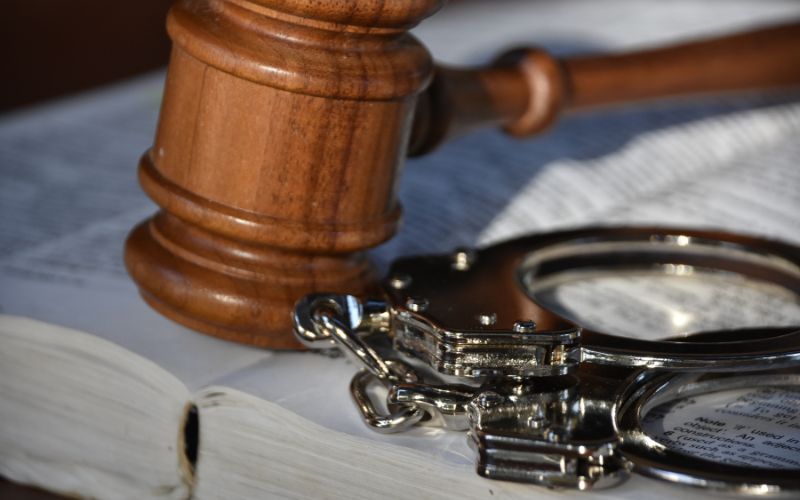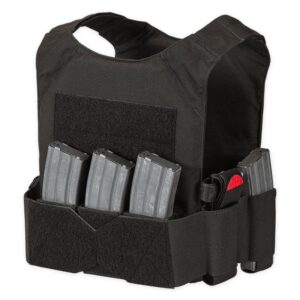The Evolution Of Tactical Gear In Law Enforcement

The field of law enforcement has experienced substantial transformation over time, driven by technological advancements and shifting societal demands. A critical aspect of this evolution is the development of tactical gear, which has transformed from basic protective equipment to sophisticated tools designed to enhance the safety and efficiency of law enforcement officers. This blog delves into the journey of essential law enforcement tactical gear, examining its historical roots, significant milestones, and the latest innovations that define the modern era.
Early Beginnings: The Birth Of Law Enforcement Equipment

In the early days of organized law enforcement, officers relied on minimal and rudimentary equipment. The 19th century saw the introduction of the first standardized police uniforms in countries like the UK and the USA. These uniforms, while providing a sense of authority, offered little in terms of protection or functionality. Early gear typically included:
- Nightsticks: Wooden clubs used for self-defense and maintaining order. They were simple but effective tactical tools for physical confrontations.
- Whistles: These are essential for communication and calling for backup, especially in urban areas where vocal calls for help might not be heard.
- Badges: Symbols of authority and identification were crucial in establishing the legitimacy of law enforcement officers.
During this period, the emphasis was more on the symbolic presence of law enforcement rather than operational effectiveness or officer safety. The primary function of the gear was to assert authority and provide basic tools for maintaining public order.
The Mid-20th Century: The Advent Of Modern Tactical Gear
In the middle of the 20th century, there were big changes in the tactical gear that police and other law enforcement officers used. This happened because crime was increasing, new materials were being discovered, and police needed better ways to catch criminals. Key developments during this era included:
- Ballistic Vests: Introduced in the 1970s, these vests offered protection against firearm projectiles, significantly reducing officer fatalities in shootouts. Made initially from layers of nylon fabric, these vests evolved with the inclusion of Kevlar, a material popular for its high tensile strength-to-weight ratio.
- Two-Way Radios: The introduction of the radio pouch revolutionized communication, allowing officers to coordinate and respond to incidents more efficiently. Communicating instantaneously across distances improved response times and coordination during emergencies.
- Handcuffs and Batons: Improved designs for restraining suspects and self-defense. Developing more durable and effective handcuffs and expandable batons provided officers with better tools for managing confrontations and arrests.
The 1960s and 1970s also saw the formation of specialized units like SWAT (Special Weapons and Tactics), which required more advanced and specialized gear for high-risk operations. These units were equipped with:
- Riot Gear: Riot gear includes helmets, shields, and body armor designed to protect officers during large-scale disturbances.
- Tactical Vests and Load-Bearing Equipment: These vests allowed officers to carry additional ammunition, medical supplies, and other essential tools during extended operations.
The Digital Age: Technological Integration And Innovation
As technology advanced, so did the sophistication of tactical gear. During the late 1900s and early 2000s, many new ideas and improvements were made to help police officers do their jobs better and stay safe. Some of the notable advancements include:
- Body Cameras: These devices provide transparency, accountability, and valuable evidence during encounters, significantly impacting law enforcement practices. They help document interactions between officers and the public, providing a clear record of events that can be critical in investigations and court proceedings.
- Non-Lethal Weapons: Tasers, pepper spray, and bean bag rounds offer alternatives to lethal force, prioritizing the preservation of life. These tools are essential for subduing suspects while minimizing the injury risk or death.
- Advanced Ballistic Armor: Modern body vests and helmets made from high-strength materials like Kevlar and ceramic composites offer enhanced protection against a wider range of threats, including high-velocity rifle rounds. These lightweight and flexible materials provide comfort and mobility while ensuring maximum safety.
In addition, the use of digital tools like GPS tracking and mobile devices has changed how police officers work while they’re out in the field. Examples include:
- Mobile Data Terminals (MDTs): In patrol vehicles, MDTs allow officers to access databases, file reports, and receive dispatch information without leaving their cars.
- GPS Tracking enhances the ability to monitor officers’ locations in real-time, improving coordination and response times during incidents.
- Real-Time Data Sharing: Platforms that enable officers to share information and intelligence instantly facilitate more informed decision-making and better situational awareness.
Current Trends: Cutting-Edge Innovations in Tactical Gear
Today, the evolution of tactical tools continues rapidly, driven by ongoing technological advancements and changing operational needs. Some of the latest trends shaping the future of law enforcement equipment include:
- Smart Helmets: Equipped with augmented reality displays, facial recognition, and communication systems, these helmets enhance situational awareness and decision-making. AR displays can provide officers with real-time information about their surroundings, suspects, and potential threats.
- Wearable Technology: Devices like smartwatches and health monitors provide real-time data on officer vitals, ensuring immediate response to medical emergencies. These devices can monitor heart rate, stress levels, and other physiological indicators, alerting medical teams if an officer is distressed.
- Drones and Robotics: Unmanned aerial vehicles (UAVs) and robots assist in surveillance, reconnaissance, and bomb disposal, minimizing risk to human officers. Drones can monitor large areas from the sky, while robots can safely inspect and neutralize hazardous devices.
- Enhanced Surveillance Systems: Advanced cameras, sensors, and AI-driven analytics improve monitoring and threat detection capabilities. These surveillance systems can analyze vast amounts of data to identify suspicious activities, track movements, and predict potential incidents.
Examples Of Innovations In Action
Recent advancements in law enforcement tactical gear have significantly enhanced the effectiveness and safety of officers in the field. These innovations leverage cutting-edge technology to provide real-time data, improve situational awareness, and reduce risks during high-stakes operations. By integrating these tools, law enforcement agencies are better equipped to handle various scenarios, from routine patrols to critical incidents.
Smart Helmets and Augmented Reality
AR technology in helmets, such as those available in Chase Tactical’s helmet accessories section, allows officers to see information overlays, such as navigation paths, suspect descriptions, and alerts about nearby threats. For example, during a search operation, an officer can receive real-time updates on the suspect’s location and visual cues highlighting areas of interest.
Wearable Technology
Smartwatches with health monitoring features can track an officer’s heart rate, blood pressure, and stress levels. If an officer’s vitals indicate a medical emergency, the system can automatically alert nearby units and dispatch medical assistance, ensuring timely intervention.
Drones and Robotics
Drones are equipped with high-resolution cameras, and thermal imaging can be deployed to survey crime scenes, conduct search and rescue operations, or monitor large public events. Robots designed for bomb disposal can be remotely operated to handle suspicious packages, reducing the risk to human officers.
Enhanced Surveillance Systems
Modern surveillance systems incorporate AI-driven analytics to monitor live feeds from multiple cameras. These systems can identify unusual patterns, such as a person loitering near a restricted area, and alert officers to potential security breaches.
Conclusion: The Future of Tactical Gear In Law Enforcement
The evolution of tactical gear in law enforcement is a testament to the continuous quest for improved safety, efficiency, and effectiveness. From the humble nightstick to sophisticated smart helmets and drones, each advancement reflects the dynamic nature of law enforcement and its adaptation to contemporary challenges. Given the rapid evolution of technology, law enforcement can expect increasingly innovative tools that will enhance their ability to safeguard and serve communities.


